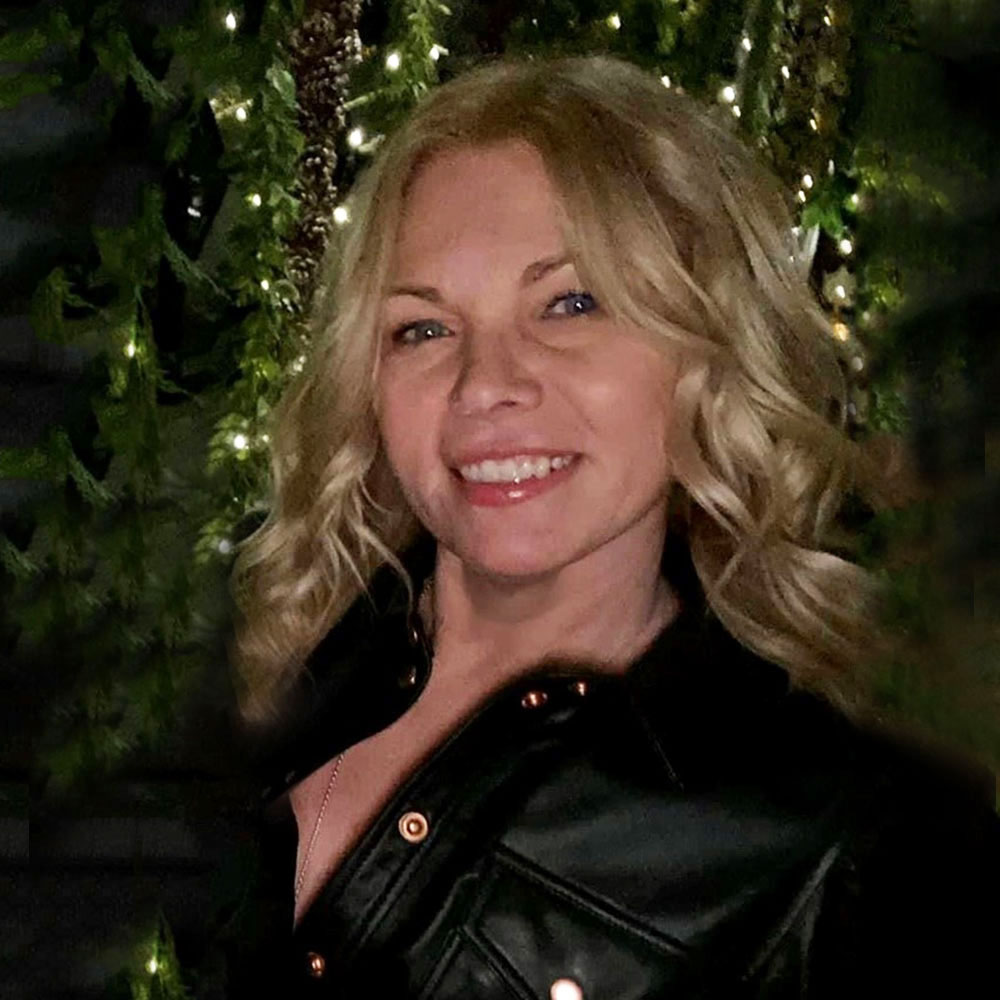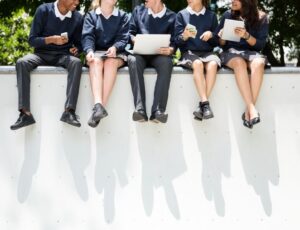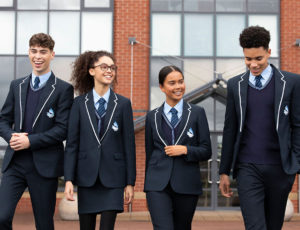Q&A: Marie Bradburn, schoolwear agent and deputy chair of the Schoolwear Association

Laura Turner speaks to Marie Bradburn – the new deputy chair of the Schoolwear Association and agent for William Turner, Falcon Sportswear and Magicfit – as she reflects on 35 years working in the schoolwear industry.
Laura Turner: How did your career path begin?
Marie Bradburn: I did geography and geology A-Level at sixth form. I’d always wanted to go into town and country planning and was offered a place at Sheffield. However, over the summer I was given the opportunity to take a textile technician sponsorship with Coats Viyella that came with a more technical education path into textiles along with a salary, so I opted for that instead. Textiles and textile manufacturing were such prominent industries at that time.
LT: What led you into the schoolwear industry?
MB: I took a job as an office manager for a small company called Jones & Park, which was a girls’ schoolwear manufacturer in Wigan. Like any small company you ended up doing a bit of everything, so I could be buying fabrics or dealing with HR issues. Jones & Park closed in 2005 and it was also at that point I decided I wanted more of a challenge. That same year I visited The Schoolwear Show and met with prominent companies in schoolwear. William Turner offered me a position and gave me many opportunities. I then joined Halbro and Raging Bull before developing my new agency representing William Turner, Halbro and Charles Kirk. William Turner and Charles Kirk set me on my path, and I’ve never looked back.
I added Falcon Sportwear to my agency over eight years ago – a fantastic move and a great company that has grown from strength to strength. And last year, I added Magicfit to my portfolio. I couldn’t have done it without the support of these amazing companies – and credit to Keith Turner and Andy Smith for seeing potential in me.
LT: How do you help support independent retailers and better understand their businesses?
MB: In 2018 I launched Women in Uniform, which is a group made up of mainly northern schoolwear retailers. I arrange meetings for them to share information and discuss retail issues. When Covid hit we continued the meetings via Zoom and they proved invaluable, allowing the retailers to support each other and prepare for reopening. I also work with different schoolwear retailers in the summer and do a couple of days retailing during Back to School. It provides great insight and dare I say is rewarding too. My love of networking and interaction with people is also how I got involved with the Schoolwear Association (SA).
LT: You were recently appointed deputy chair of the SA – what attracted you to the role?
MB: I initially joined the SA when I became an agent, as it adds value to my position. I’d been an executive member for about nine years. I also organise the annual SA event, but I wanted to be more involved and share my experience and knowledge. Working with David Burgess and his passion for the SA and our industry inspired me, so when the position of deputy chair arose, I went for it.
The SA is very active at the moment. A lot is going on behind the scenes with the VAT campaign and the school uniform bill. The information members currently receive, including fortnightly mailers, is fantastic; as is the perseverance of the SA chair Matthew Easter, I must mention his hard work and the commitment all the execs put into the SA, voluntarily too.
LT: How has the schoolwear industry changed over the years?
MB: Back in the Jones & Park days – where we supplied Harrods, John Lewis, and various exclusive private girls’ schools – we had the control of a UK manufacturing set up. We could react instantly to orders if we needed to and took that for granted back then. However, UK manufacturing became too expensive and was all about the price. That was a huge change, manufacturing moving away from the UK. Schools wanted more of a corporate image and the PE Kit especially transformed due to demand. The growth of online, which was accelerated through Covid, has changed schoolwear retail and is a very different way of working. I’m also seeing greater focus on retail experience, including increased attention to merchandising and making the purchasing of school uniform a more enjoyable experience.
LT: What do you think the schoolwear industry should be focusing on in the future?
MB: Sustainable and recyclable product is becoming more available, even though schools can still be a bit cautious over price. Following the school uniform bill, our industry is under constant scrutiny, so we can’t lose sight of our end user and the ‘people element’. It’s not just about selling a product. We must continue focusing on why we’re selling it – the durability and longevity of the garment and how it supports pre-loved. We also need to continue putting back into our communities, which is something a lot of retailers have been doing for many years but don’t necessarily promote.
Our industry is very fluid and big changes can happen quickly. I’m sure there will be more changes in the future. I’ve met some amazing people along my schoolwear journey − colleagues and friends − all with a passion for what we do. Let’s face it, what an achievement to send the children of the UK Back to School in uniform every year.










